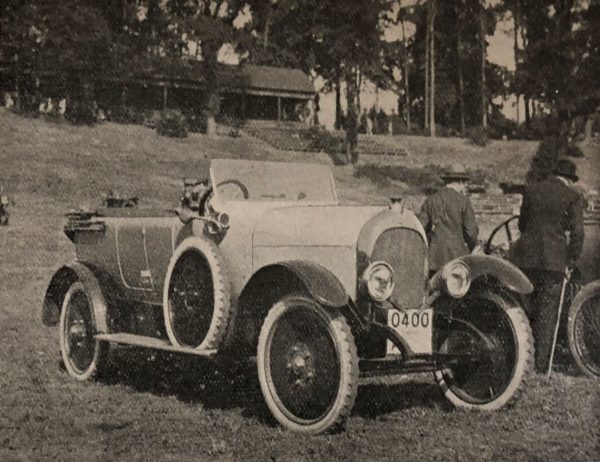
This picture was taken at a hillclimb during 1921 – perhaps a reader can identify the venue. The car was being tested by The Car magazine and the review was positive, but in a rather curious way. The price of £442 for the complete car was considered good value for money, but the review went on to explain how ‘economy had been effected.’ The reviewer observed that in every case where components showed signs of being cheap to produce, they did not affect performance or ‘imperil longevity.’ There was mention of a radiator with a clip-on brass surround, cheap linoleum on the floor, and no ornamental handle on the simple forged gearlever. Not, perhaps, the most persuasive argument for buying the car.
The Cubitt was manufactured by a subsidiary of the builders Holland, Hannen and Cubitt, famous for constructing many houses in Belgravia, Osborne House in the Isle of Wight and, in 1920, the Cenotaph in Whitehall. Cubitt’s Engineering were based in Aylesbury; they aimed to build an American style of car of solid construction, and to make it in large numbers – 100 per week were projected but the maximum reached was only 60, and then only for a short period.
The 4-cylinder side-valve engine was relatively large, at 2815cc, and was coupled to a massive gearbox and equally solid rear axle with overhead worm drive, giving a high build and a tendency to roll on corners. Although this may have limited sales in Britain, its good ground clearance was more appreciated in Australia, and there are survivors of the marque in that country to this day.
In 1922 the company was bought by S. F. Edge, at that time a director of the engine makers British Anzani and managing director of AC Cars. He recruited J.S. Napier (nothing to do with the car maker earlier associated with Edge) from Arrol-Johnston as a director and designer. Napier made a few important changes: aluminium pistons and lighter connecting rods improved performance, and an underslung worm-drive rear axle lowered the car. But with the price now at £475 sales did not improve, and the Cubitt company was placed into voluntary liquidation in 1925.
Picture courtesy of the Richard Roberts Archive







It looks like the Members’ Hill at Brooklands.
This is 100% at Brooklands at the top of the Test Hill